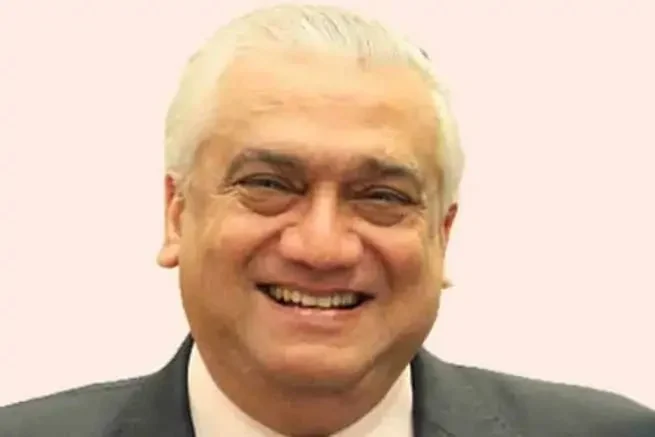TALMIZ AHMAD, a distinguished Indian diplomat renowned for his expertise in Middle Eastern affairs, has served as India’s Ambassador to Saudi Arabia, Oman, and the UAE. In an interview with MOHD NAUSHAD KHAN, he pinned hope in the American administration “to take the full responsibility in the deal and ensure that the second and third phases are also satisfactorily implemented.”
First of all, I would like to know the nitty-gritty of the ceasefire.Who do you think is going to benefit most from the deal – America, Israel or Hamas?
The most significant aspect of the ceasefire is that it will put an end to the mass killings that Israel has carried out against the Palestinian people over the past 15 months. This development sends an important message to the people in Gaza. During this period, Israeli forces have killed 47,000 Palestinians, most of whom were women and children. These actions were conducted with complete impunity, despite condemnations from the International Court of Justice and warnings from the International Criminal Court. No restraint whatsoever has been exercised in response to these atrocities.
This agreement was initially proposed in May last year. At that time, it had the full support of the United States, and Prime Minister Netanyahu had initially agreed to it, only to later withdraw. Since then, additional 10,000 Palestinians have been killed before the agreement was finally accepted.
The important feature of this ceasefire is that, for the first time in 15 months, the Palestinians will experience some relief from the ongoing violence. Furthermore, it will facilitate the delivery of much-needed humanitarian assistance to Gaza.
In return, Israel has secured 33 hostages. This is the first stage. In the second stage, the remaining hostages will be released, and Israeli forces will withdraw from Gaza, moving instead to a buffer zone outside Gaza. This marks a significant shift, as Israel will recover its hostages but will no longer maintain direct military control over Gaza.
In the third phase, the bodies of deceased hostages and others in Hamas custody will be returned. In exchange, there will be a notable increase in reconstruction efforts in Gaza.
However, the full implementation of this plan remains uncertain. While phase two has been agreed upon in principle, many details still need to be negotiated. Discussions are expected to resume in about 10 to 12 days. Despite the challenges, I remain optimistic as of now.
The ceasefire was almost on the table in May.What really went wrong and what compelled Israel to go for it now? Pressure from Donald Trump or something else?
You see the problem Prime Minister Netanyahu faces is that he heads an extreme right-wing government. His coalition includes 14 parliamentarians representing ultra-nationalist and ultra-religious movements, as well as two key ministers: the finance minister and the national security minister, who are aligned with these extremist groups. These factions are openly xenophobic, racist, and advocate violence against Palestinians. They strongly opposed the ceasefire proposal when it was first introduced in May last year. At that time, Minister Ben-Gvir publicly claimed credit for blocking the ceasefire process. As a result, over 10,000 Palestinians have lost their lives due to internal political dynamics within the Israeli government.
The recent shift, however, can be attributed to the emergence of Donald Trump as President of the United States. Trump has expressed a clear desire for a ceasefire to be in place before his presidency begins. To reinforce this message, his special envoy for the Middle East, Steven Witkoff, held discussions with Netanyahu, emphasising Trump’s expectation of a ceasefire. Recognising the need to cooperate with the incoming U.S. administration, Netanyahu likely deemed it prudent to align with Trump’s wishes to secure support for his future agenda.
This decision appears to be an opportunistic move by Netanyahu to accommodate Trump’s demands. However, the durability of this arrangement remains uncertain. The agreement outlines a comprehensive three-phase plan, and Netanyahu cannot unilaterally abandon the second and third phases after completing the first. The U.S. administration bears the responsibility of ensuring that all phases of the agreement are implemented satisfactorily.
My impression is that this agreement is robust, and it is essential for the U.S. to uphold its commitments to ensure its full realisation.
After the ceasefire deal, Palestinians have now control over Rafah crossing which is said to be another big win for the Palestinians. How would you like to respond?
Gaza is currently in ruins. Not only have countless lives been lost, but nearly the entire population has been displaced. The physical infrastructure, including housing, medical facilities, and educational institutions, has been completely destroyed. Gaza is overwhelmingly reduced to rubble, and it will take a good amount of time before the Palestinians can rebuild even the minimum conditions for a dignified life.
The primary achievement for them at this moment is the cessation of the violence they had been enduring. While I do not expect Israel to abandon its aggressive agenda quickly, as of now, at least the lives of the Palestinian people have been spared, providing a glimmer of hope amidst the devastation.
The first stage of ceasefire is likely to go down smoothly.Are you in any way concerned about the nature and implementation of second and third stages?
Many have expressed scepticism about whether Netanyahu will proceed with the second phase of the agreement, particularly given the immense pressure on his government. Extremist parties within his coalition have threatened to withdraw their support, potentially collapsing the government. This raises serious doubts about whether Netanyahu will follow through, especially since the second phase involves withdrawing Israeli forces from Gaza.
The far-right agenda seeks not just withdrawal but the complete “cleansing” of Gaza of its Palestinian population and the resettlement of Israeli settlers in the region, similar to actions taken in the West Bank. It remains unclear whether Netanyahu fully supports this agenda or whether it will succeed. At this stage, the fate of the second phase depends heavily on the political dynamics in Tel Aviv and Washington, D.C.
In Tel Aviv, Netanyahu’s ability to secure his coalition’s stability will likely determine the second phase’s progress. If he falters, the political influence of Washington may come into play. The US administration, which originally brokered and strongly advocated for the deal, could step in to ensure its implementation. However, both Netanyahu and Trump, known for their self-serving tendencies, might derail the agreement. Netanyahu could attempt to convince Trump or his administration that Hamas has not fulfilled its commitments, potentially reigniting the conflict.
This scenario would represent a betrayal of the agreement and would deliberately put the remaining hostages at grave risk. While such a move would highlight Netanyahu’s lack of moral accountability and self-serving nature, it would undermine trust in the deal entirely. Nevertheless, the agreement is a composite commitment, and both Israel and the United States bear responsibility for ensuring its successful implementation. Let’s hope that bad faith does not prevail, and the agreement moves forward as intended.
My concern is whether a complete ceasefire can truly be achieved unless Israeli forces withdraw from Gaza. If it does happen, who will govern Gaza? Reportedly, Israel is adamant about preventing Hamas from ruling Gaza, while Hamas insists on the removal of Israeli forces. Under such circumstances, can we think of complete ceasefire?
Phase two focuses on two key principles: the withdrawal of Israeli forces from Gaza and the release of the remaining living hostages. The specifics of these two points still need to be negotiated, with discussions expected to commence in the coming days.
Regarding the Israeli withdrawal, several proposals are under consideration. One possibility is the establishment of a reformed Palestinian Authority, either under Mahmoud Abbas or an alternative leadership. Such a reformed authority could be supported by major Arab states, including Saudi Arabia, the UAE, Qatar, and Egypt.
I would suggest for consideration that Arab states could potentially deploy peacekeepers in Gaza. This could be done under the auspices of the United Nations, the Gulf Cooperation Council (GCC), or the Arab League. These peacekeepers could provide security, ensure peace and stability in the region, facilitate the distribution of humanitarian aid, and help maintain basic law and order. Their presence could also support the Palestinian people in rebuilding their lives with dignity and hope for the future.
Who do you think will play dominant role in the rehabilitation, reconstruction process?What role India should play in this regard?
Reconstruction is a key component of phase three, which will only begin after the successful completion of phase two. This will be a monumental undertaking, yet it is well within the capabilities of the international community. Initially, efforts will focus on establishing temporary solutions, such as a tent city, to provide essential life support, including food, clothing, and shelter. Over time, health and education facilities will be prioritised. Once these basic needs are met, companies, organisations, and state authorities are likely to step in to take on responsibilities for long-term reconstruction. However, reconstruction efforts will require sustained stability in the region. No entity will invest huge funds into rebuilding without assurances of peace and security.
In this context, I firmly believe that India should play an active role in the reconstruction process. India has a long-standing relationship with the Palestinians and has provided millions of dollars in aid and assistance over the years, including major infrastructure projects in the West Bank. This presents an excellent opportunity for India to demonstrate goodwill and support for the Palestinians through meaningful contributions to reconstruction efforts.
Reconstruction will be a collective international endeavour, likely overseen by the UN or another global body. New institutions may emerge to coordinate these efforts. Qatar, Saudi Arabia, and the UAE are expected to play pivotal roles in financing this initiative, further emphasising the need for broad-based collaboration.


